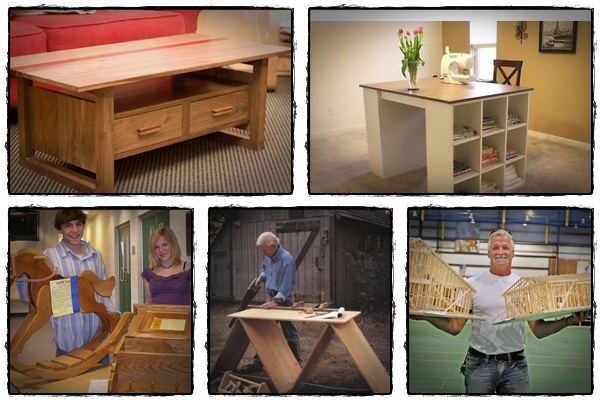Why Turning a Hobby into a Business Works

Many successful businesses started as hobbies. The transition from hobbyist to entrepreneur is often seamless—what changes is the intention to sell to others rather than creating for personal satisfaction.
Woodworking is a prime example. The demand for handcrafted wooden products—from children’s toys to custom furniture—makes it a lucrative opportunity for hobbyists looking to earn extra income.
Do You Need to Be a Master Carpenter?
No! You don’t need to be a seasoned professional to create high-quality wooden items. Many woodworking enthusiasts already possess the necessary skills to produce unique, durable, and aesthetically pleasing products.
Visiting craft fairs proves this point—handmade wooden products often sell out quickly. Consumers crave unique, high-quality, handcrafted items that stand out from mass-produced alternatives.
Starting Small: No Pressure, Just Passion
If you’re hesitant to take the leap into business, start small. Create pieces at your own pace and sell them at local craft fairs, online marketplaces, or even through word-of-mouth.
You’re not aiming to compete with big furniture stores—your niche is in custom-made, high-quality, and handcrafted pieces that people are willing to pay a premium for.
Why Garden Furniture is a Great Starting Point
Garden furniture is always in demand, and it’s an excellent entry point because:
- It doesn’t require intricate detailing or expensive tools.
- It sells well—major retailers dedicate large sections to garden sets.
- It allows you to refine your skills while making products that people use and appreciate.
How to Get Started
- Research Designs & Get Plans – Look at existing furniture designs and choose one you like.
- Use What You Have – If you’ve been woodworking as a hobby, you probably own the necessary tools.
- Build in Your Spare Time – No pressure, no deadlines—just craft as you would for yourself.
- Set a Fair Price – Don’t underprice your work. Calculate labor costs and add a premium for uniqueness.
- Sell Strategically – Start with craft fairs, friends, and social media before expanding to online marketplaces.
Pricing Your Handmade Wooden Furniture
Many new woodworking entrepreneurs struggle with pricing. A simple yet effective strategy is:
- Calculate the hours spent making the product.
- Multiply that by a fair hourly rate.
- Add a premium for the handmade, unique nature of the item.
Remember, you’re not competing with mass-produced furniture—your customers value craftsmanship and exclusivity.
Selling Your Woodworking Creations
1. Craft Fairs & Local Events
Craft fairs attract people looking for handmade, one-of-a-kind items. Unlike big-box stores, these buyers understand the value of craftsmanship and are willing to pay more.
2. Word of Mouth & Local Network
Many successful woodworking businesses grow organically through friends, family, and referrals. Satisfied customers recommend your work to their network, creating a snowball effect.
3. Online Sales & E-commerce
Consider selling on platforms like:
- Etsy – A marketplace for handmade goods.
- Facebook Marketplace – Great for local sales.
- Instagram & Pinterest – Visual platforms where custom furniture shines.
Why Now is the Best Time to Start
The appreciation for handcrafted, sustainable, and custom furniture is at an all-time high. People are moving away from mass-produced items in favor of pieces with character and craftsmanship.
Even if you don’t aim to make woodworking a full-time business, it’s a great way to earn extra income doing something you love.
What’s the worst-case scenario? You end up with a beautiful, handcrafted piece of furniture for your own home.
So, if you’ve ever considered making money from your woodworking skills, now is the time to start!

If you’d like an easy way to earn part-time
income by doing something FUN, go check this out now:
http://www.woodprofits.com?vhbshygdf398432